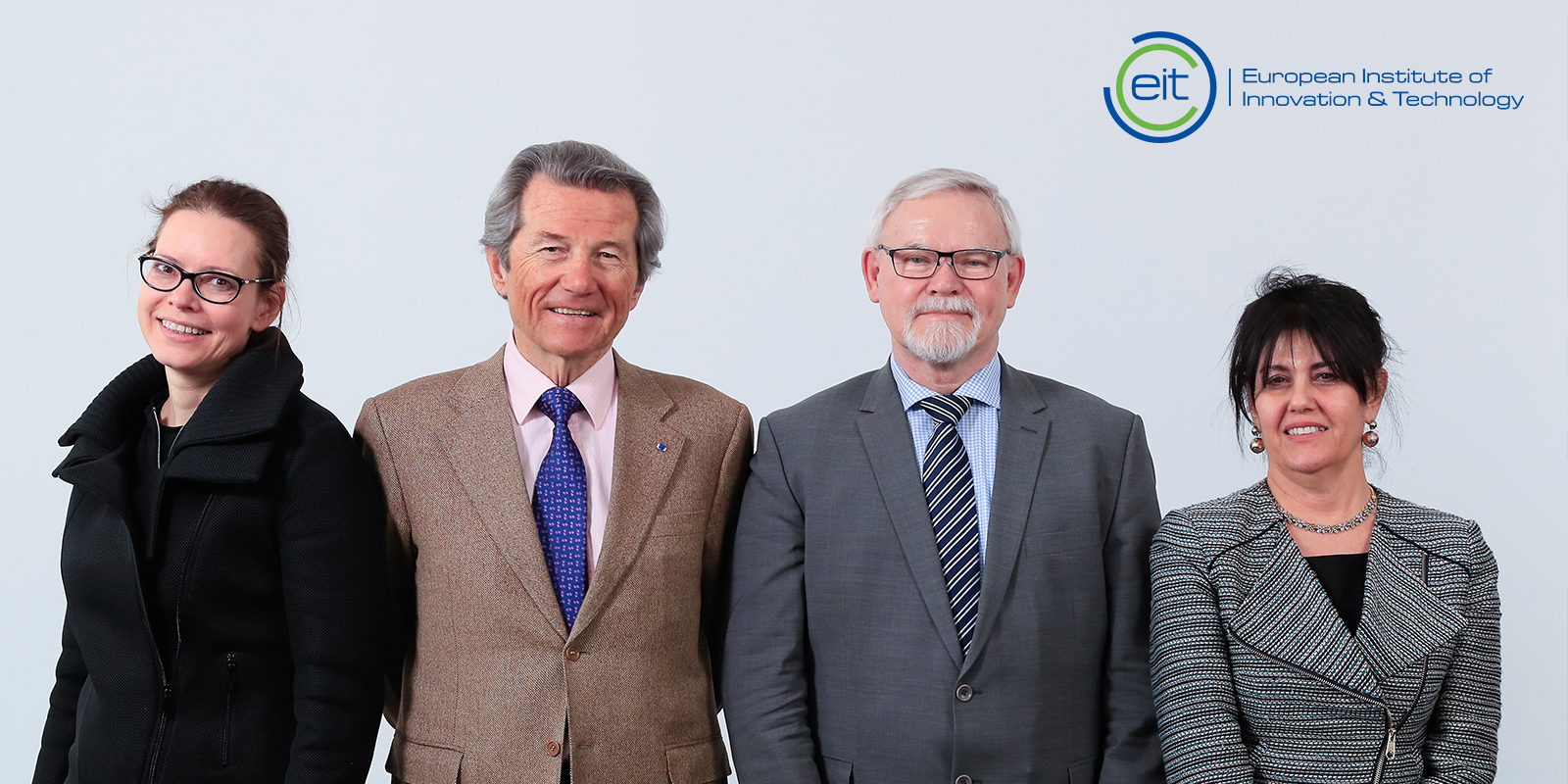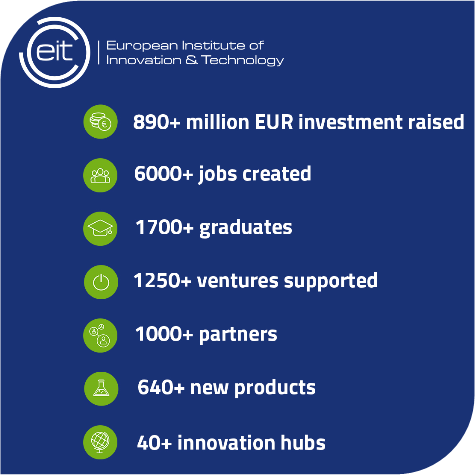10 years of innovation success marked by outgoing EIT Governing Board members

Tangible results, impact and strong indicators of future achievements.
As the mandate of Peter Olesen, Elpida Keravnou-Papailiou, Jana Kolar and Bruno Revellin-Falcoz on the EIT Governing Board came to an end on 1 July, we spoke to them about their time guiding the EIT.
Peter Olesen, Chairman of the EIT Governing Board since the beginning of August, 2014, pointed to how the 'EIT has developed a new and original operating model based upon the integration of education, research and business into an integrated ecosystem.' He describes this ecosystem as unique, and one that has 'led to the recognition of the EIT Community as a highly diverse, agile and by far the largest pan-European ecosystem.'
Elpida Keravnou-Papailiou also pointed out the EIT's 'approach to innovation [...] has delivered tangible results that translate into significant value for Europe.' Jana Kolar added to this: ‘The EIT is a daring, innovative experiment, which is quite unique in the field of European public policy. It builds on continuous evaluation to continuously improve and develop into a distinctive, European innovation powerhouse.’
EIT Education
Elpida focused strongly on the education pillar during her time on the EIT Governing Board. Her background in academia gave her insights as to how the EIT's education agenda could be widened and integrated more closely with other European initiatives. Elpida said that what she 'found especially illuminating, that also testifies to the strength and viability of the EIT model [..] is that a graduate of one Innovation Community, could be supported and mentored by another Innovation Community in developing their idea or start-up.'
Bruno Revellin-Falcoz, added that the EIT, unique among European initiatives, has 'raised entrepreneurial education to the highest level.'
Ten years
That the EIT this year 'celebrates' the 10th year of its foundation, was a strong theme for the outgoing Governing Board members. Elpida noted that during that time, the EIT's 'concept has been proven and validated through independent reviews,' while Peter noted that the EIT model ensured that 'openness and focused activities go hand in hand to deliver strong results, outcomes and impact.' Bruno noted that the EIT has, during these 10 years, 'demonstrated its capacity to develop entrepreneurial spirit, encouraging innovators to go from lab to market.' Jana added that ‘This is key to the innovation process.’
Global challenges
When it came to the EIT’s vision to ‘develop world-class solutions to societal challenges’, all were in agreement that the EIT’s unique model and long-term approach were not rhetoric, but had real substance, as shown in the excellent findings in reports published in 2017.
The EIT Community currently has six Innovation Communities, each addressing a specific societal challenge:
- EIT Climate-KIC: working to accelerate the transition to a zero-carbon economy
- EIT Digital: driving Europe’s digital transformation
- EIT Food: leading a global revolution in food innovation and production
- EIT Health: giving EU citizens greater opportunities to enjoy a healthier and active life for longer
- EIT InnoEnergy: achieving a sustainable energy future for Europe
- EIT Raw Materials: boosting competitiveness, growth and attractiveness of the European raw materials sector via radical innovation, new educational approaches and guided entrepreneurship
Two more Innovation Communities will join the EIT Community in 2018:
- EIT Urban Mobility: smart, green and integrated transport
- EIT Manufacturing: strengthening and increasing the competitiveness of Europe’s manufacturing industry
With an ecosystem that is now firmly bedded in the European innovation environment, the EIT’s Innovation Communities are showing great potential in transforming those sectors in which they operate.
Next steps
According to Bruno, the next step for the EIT will be to make 'the efficiency [of the EIT] better known, to increase visibility so that it can efficiently support more innovators across Europe.' Elpida thinks the EIT should 'take the lead in cross-Innovation Community activities, broadening its education agenda and pushing forward its Regional Innovation Scheme.' The latter was echoed by Jana: ‘The EIT is also in a unique position to bring a European dimension to regional innovation systems and significantly increase their effectiveness. Think of it as a pan-European innovation network, acting as a glue that binds regional, national and EU-wide actors and supporting activities into one European innovation ecosystem.’
For the departing board members, the next step is to capitalise on the experience gained with the EIT during the past six years. On behalf of the entire EIT Community, we would like to thank Peter Olesen, Elpida Keravnou-Papailiou, Jana Kolar and Bruno Revellin-Falcoz for guiding the EIT to where it is today.
Subscribe to the EIT Newsletter to get the best of the EIT Community's news in your inbox once each month.




 Share this page
Share this page


